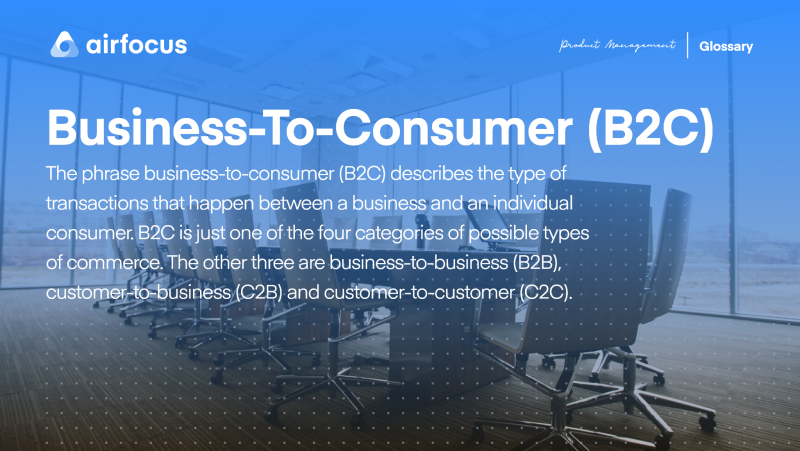What Is Business-to-Consumer? Business-to-Consumer Definition, Examples, Key Models, & FAQ
What is business-to-consumer (B2C)?
💬
Definition of business-to-consumer (B2C)
The phrase business-to-consumer (B2C) describes the type of transactions that happen between a business and an individual consumer. B2C is just one of the four categories of possible types of commerce. The other three are business-to-business (B2B), customer-to-business (C2B) and, customer-to-customer (C2C).
Examples of business-to-consumer
Businesses that engage in business-to-consumer transactions are known as B2C companies, as opposed to B2B companies that deal with other businesses. However, the two don’t exclude each other.
For example, Microsoft performs both business-to-consumer transactions — when it sells electronics to individuals — as well as business-to-business commerce — when it deals with its suppliers or corporate clients.
While B2C initially referred to any product or service sold in-person to individuals, after the dotcom boom it became synonymous with online selling. Why? Because with the rise of e-commerce, traditional stores have lost ground to online giants such as Amazon and eBay. These online businesses eliminated physical retailers by streamlining products from manufacturers directly to individuals, at lower prices.
The 5 key B2C business models
When talking about online sales, there are 5 popular B2C business models, depending on what entities are involved and how revenue is made.
-
Direct sellers
These are online retailer sites where customers can buy products directly. Examples are samsung.com and zara.com.
-
Online intermediaries
Without owning any product or service, online intermediaries simply connect sellers and buyers. Think of businesses such as Etsy or flight booking platforms such as Skyscanner.
-
Advertising-based
B2C advertising-based businesses rely on providing high-quality content to attract traffic which they then leverage to sell advertising for other products or services. Almost all publications that offer free content operate under this model.
-
Community-based
In this model, businesses market their products to online communities built around common interests. Facebook is the best example. The social platform earns revenue by helping businesses reach audiences with high targeting precision.
-
Fee-based
These B2C companies offer services or content in exchange for a subscription fee. Examples include entertainment platforms such as HBO Go and Netflix, but also publications such as Wired and The New Yorker, that have a free-read limit until they start charging for their content.
















![Toni Kroos là ai? [ sự thật về tiểu sử đầy đủ Toni Kroos ]](https://evbn.org/wp-content/uploads/New-Project-6635-1671934592.jpg)


